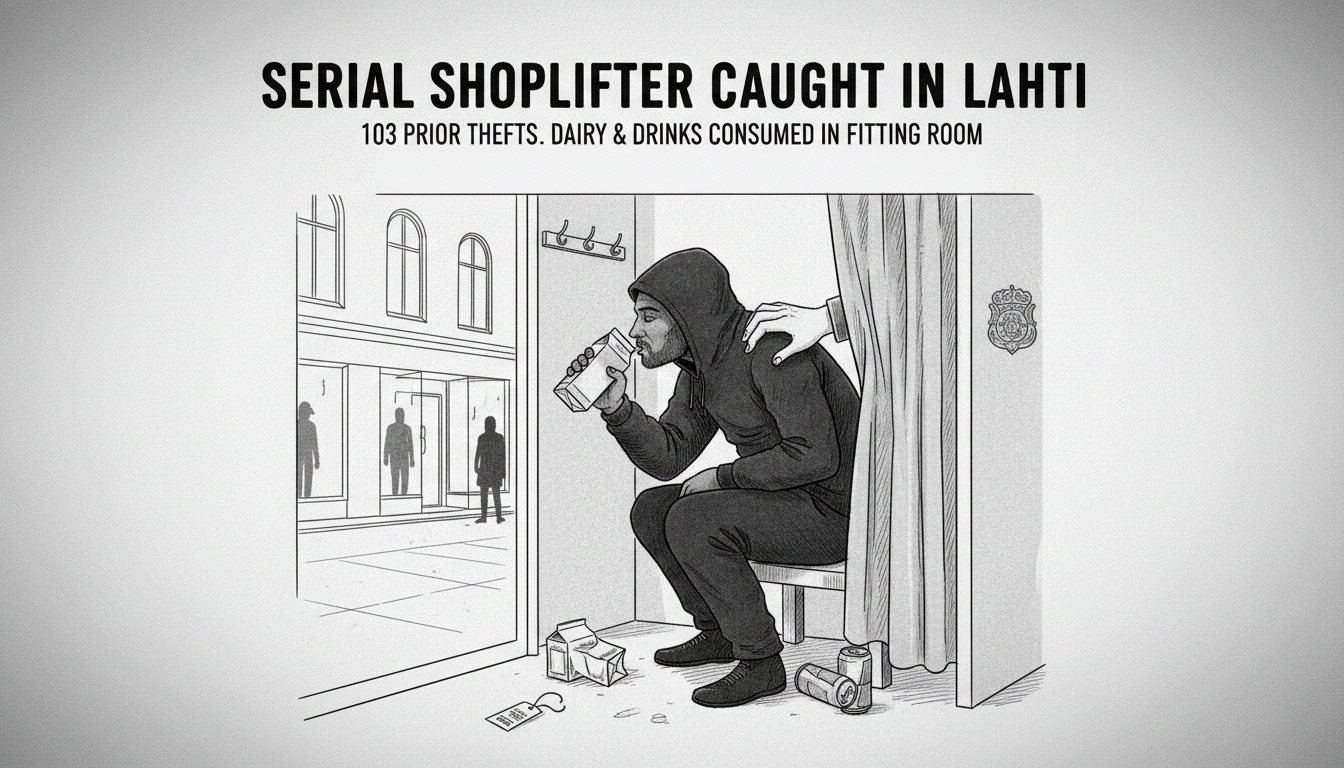Police in Lahti apprehended a familiar serial shoplifter on Friday evening. The man had stolen cream, yogurt, and energy drinks worth 11.59 euros from store shelves. He then consumed the products inside the store's fitting room before returning empty packages to shelves.
Officers responded to a local store around 9 PM after staff detained the suspect. The 35-year-old man now faces charges for his latest theft. Police confirmed he had no intention of paying for the items.
This arrest represents just one incident in a much larger pattern. The same shoplifter has been caught for 103 separate thefts within the past year. His repeated offenses highlight ongoing challenges with retail crime in Finnish cities.
Finland maintains relatively low crime rates compared to other European nations. Yet serial shoplifting persists as an issue affecting retailers nationwide. Store owners face financial losses from repeated thefts by habitual offenders.
Police officials note this case demonstrates typical behavior patterns among chronic shoplifters. Many operate with specific methods and target the same locations repeatedly. The fitting room consumption suggests immediate need rather than resale motives.
Finnish law treats shoplifting as theft, with penalties ranging from fines to imprisonment depending on value and frequency. Repeat offenders often face escalating consequences. The judicial system must balance punishment with addressing underlying issues driving such behavior.
Local businesses in Lahti have reported increased concerns about retail security. This case may prompt discussions about prevention strategies. Some stores already employ security personnel and electronic surveillance systems.
The economic impact of serial shoplifting extends beyond immediate product loss. Retailers must invest in security measures and staff training. These costs ultimately affect consumer prices and community business viability.
Police continue investigating this individual's extensive theft history. Prosecutors will determine appropriate charges based on the full scope of his activities. The case underscores how persistent offenders can strain law enforcement resources.
Nordic countries typically emphasize rehabilitation over pure punishment. Yet authorities must also protect businesses from financial harm. This balance remains challenging when dealing with habitual offenders who show little behavior change.
What drives someone to commit over 100 thefts in a single year? The answer likely involves complex social and psychological factors. Understanding these motivations could help develop more effective intervention strategies.
Retail theft affects communities across Finland, not just major cities. Smaller towns often have fewer resources to address persistent offenders. This case in Lahti reflects broader national concerns about retail crime prevention.

